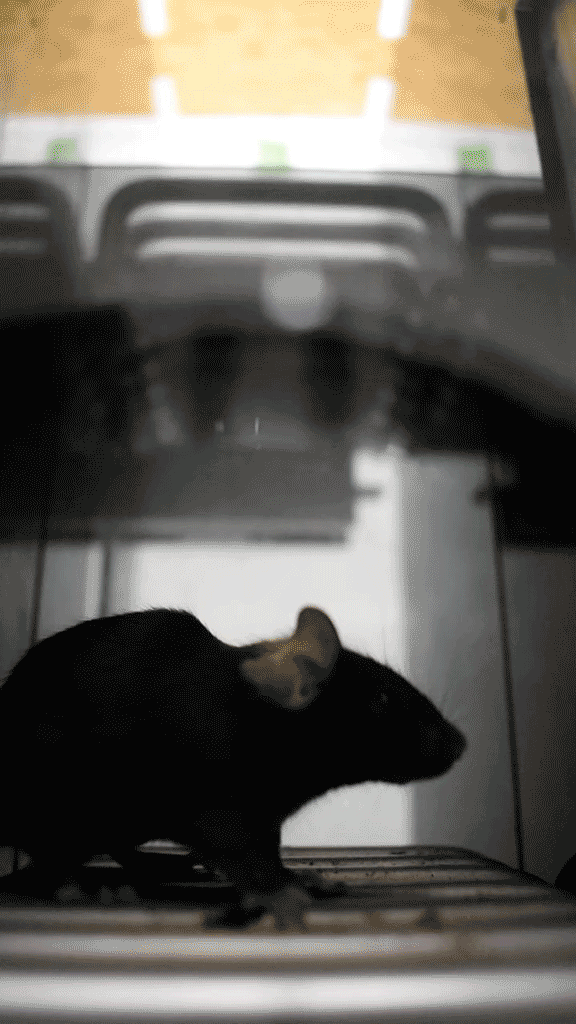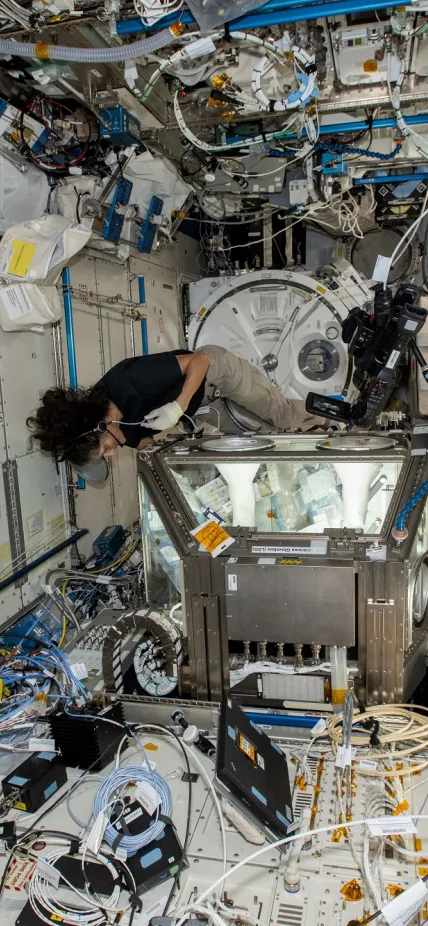Baltimore, MD— Jumping workouts could help astronauts prevent the type of cartilage damage they are likely to endure during lengthy missions to Mars and the Moon, according to a Johns Hopkins University-led research group that included Carnegie Science’s Chen-Ming Fan. Their work is published in the journal npj Microgravity,
The work—which shows knee cartilage in mice grew healthier following jumping exercises—adds to ongoing efforts by space agencies to protect astronauts against deconditioning due to low gravity, a crucial aspect of their ability to perform spacewalks, handle equipment and repairs, and carry out other physically demanding tasks.
The team included a broad range of expertise, including musculoskeletal biologists like Fan; astrophysicists, like lead author Marco Chiaberge of Johns Hopkins University, the Space Telescope Science Institute, and the European Space Agency; engineers, and medical researchers.
“The positive effect we saw in these mice is huge, and the magnitude of it was unexpected. They can basically make their cartilage thicker if they jump. Maybe astronauts could use similar training before their flight as a preventive measure,” said Chiaberge.
Healthy cartilage is essential for pain-free movement, as it cushions joints and decreases bone friction. But cartilage heals slowly and does not regenerate as quickly as other tissue. Prolonged periods of inactivity—whether from bed rest, injury, or space travel—can accelerate cartilage breakdown. Space radiation can also accelerate this effect, and European Space Agency experiments have shown evidence of cartilage degradation in astronauts who spend several months aboard the International Space Station.

Previous research has shown that treadmill running may help slow cartilage breakdown in rodents. The new study adds to the evidence by demonstrating that jump-based exercise may prevent articular cartilage loss in knees and could actually improve cartilage health.
The researchers found that mice in a nine-week program of reduced movement experienced cartilage thinning and cellular clustering, both early indicators of arthritis. But mice that performed jump training three times a week showed the opposite effect—thicker, healthier cartilage with normal cellular structure.
The study found the mice with reduced movement had a 14 percent reduction in cartilage thickness, while those in the jump-training group had a 26 percent increase compared to a control group. Additionally, the jumping mice had 110 percent thicker cartilage than the reduced activity group.
Jumping also enhanced bone strength. The team found shin bones in the jumping mice had 15 percent higher mineral density. Trabecular bone—spongy bone tissue that absorbs impact—was significantly thicker and more robust.
While more research is needed to confirm whether humans would enjoy the same benefits, the findings offer promising information to protect cartilage and bone structure. Jumping exercises could be included in pre-flight routines to prepare joints for space travel, and specially designed exercise machines could help integrate similar workouts in space.
The study could help scientists explore how jump-based training might not only aid patients with arthritis but also boost cartilage health with generally applicable exercises, explained Fan.
The team emphasized the need for further research to determine the ideal exercise volume and frequency for preserving and strengthening cartilage. Future work will also explore whether jump training could help reverse cartilage loss and whether the exercise could help astronauts restrengthen their cartilage and recover damage from space flight.
“Now that we’ve got our first clue that one type of exercise can increase cartilage, which was completely unknown before, we could start looking into other types of cartilage. What about the meniscus? Could it also get thicker?” asked Fan. “This research could help performance-enhancement studies, rather than just focusing on pathological conditions, and help athletes or virtually anyone interested in doing the right exercises to improve their performance.”
Fan has studied many aspects of the musculoskeletal system, which is critical for our upright posture and movement. His research ranges from embryonic musculoskeletal development to muscle and tendon repair following injury, and extends to their aging and diseases such as muscular dystrophy.
Other authors are Neelima Thottappillil, Anderson Furlanetto, Dylan Odell, Christine Wang, Stephen Hope, Stephen Smee, Joseph Rehfus, Colin Norman, and Aaron W. James of Johns Hopkins; Anna-Maria Liphardt of Universitätsklinikum Erlangen, Friedrich-Alexander-Universität; Anja Niehoff of German Sport University Cologne; and Marc J. Philippon and Johnny Huard of Steadman Philippon Research Institute.
Acknowledgments
This research was supported by a Space@Hopkins Seed Grant and by the Carnegie Science Endowment.
